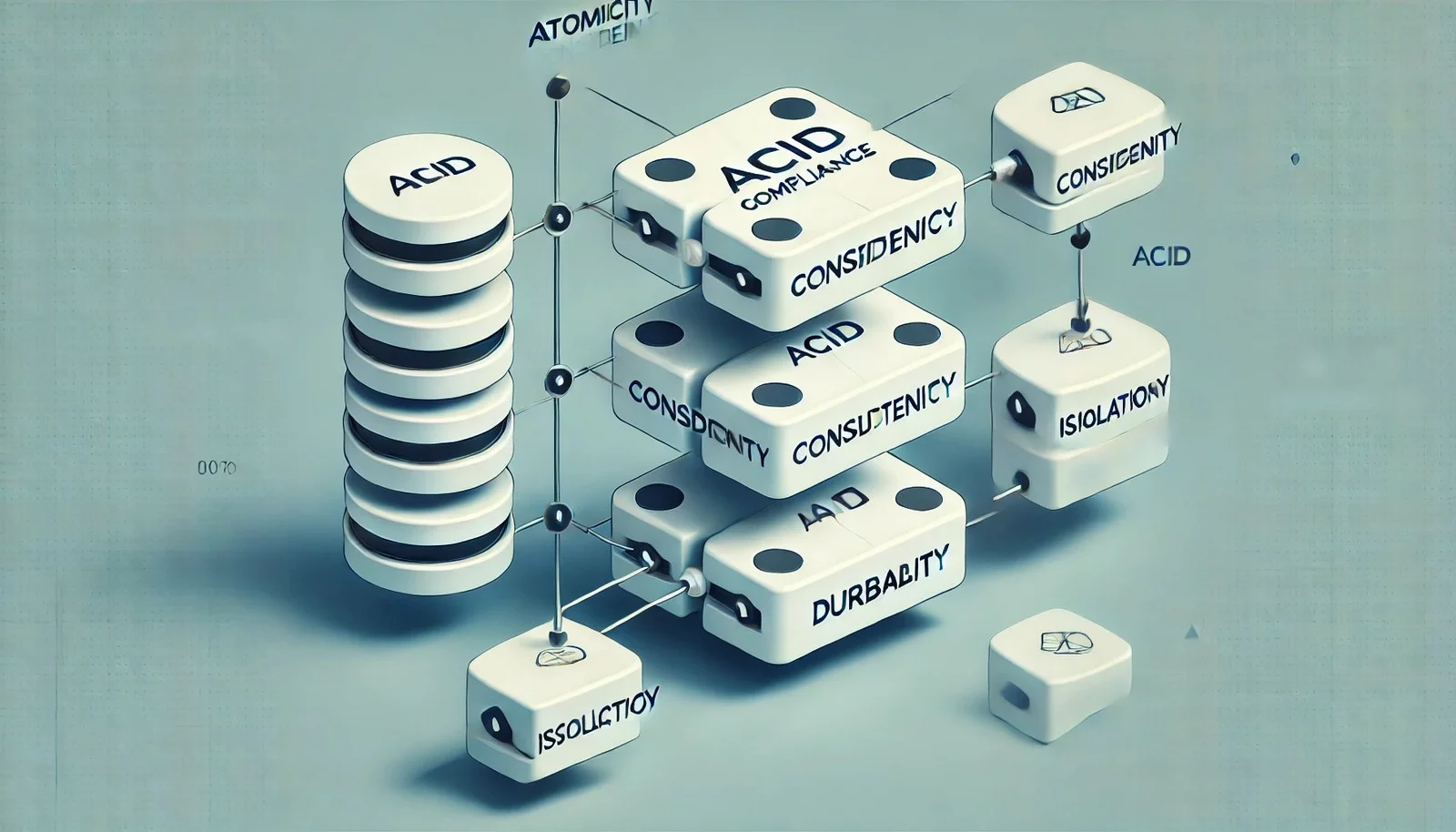ACID Compliance
 (Representational Image | Source: Dall-E)
(Representational Image | Source: Dall-E)
Quick Navigation:
- ACID Compliance Definition
- ACID Compliance Explained Easy
- ACID Compliance Origin
- ACID Compliance Etymology
- ACID Compliance Usage Trends
- ACID Compliance Usage
- ACID Compliance Examples in Context
- ACID Compliance FAQ
- ACID Compliance Related Words
ACID Compliance Definition
ACID compliance is a set of properties that ensure database transactions are processed reliably. The acronym stands for Atomicity, Consistency, Isolation, and Durability.
- Atomicity ensures that a transaction is fully completed or not executed at all.
- Consistency guarantees that a database remains valid before and after a transaction.
- Isolation ensures transactions do not interfere with each other.
- Durability means completed transactions are permanently saved, even in case of failures.
ACID compliance is fundamental to databases used in financial, healthcare, and enterprise applications where data integrity is crucial.
ACID Compliance Explained Easy
Imagine a bank transaction where you transfer money to a friend. If the transfer is interrupted, ACID compliance ensures that either the full transfer happens, or nothing happens at all—so your money doesn’t just disappear. It also ensures that the bank records stay correct and no mix-ups happen, even if multiple people transfer money at the same time.
ACID Compliance Origin
The concept of ACID compliance was first introduced in 1983 by computer scientist Theo Härder and Andreas Reuter. They formalized these principles to define reliable transaction processing in databases. The model has since become the gold standard for database management systems (DBMS).
ACID Compliance Etymology
The term "ACID" was coined to summarize the four key properties of reliable transactions: Atomicity, Consistency, Isolation, and Durability. The word itself is not related to chemistry but rather serves as a mnemonic device to easily remember these principles.
ACID Compliance Usage Trends
With the rise of cloud computing, distributed databases, and NoSQL alternatives, ACID compliance has remained essential for traditional relational databases like PostgreSQL, MySQL, and Oracle DB. However, some modern databases trade ACID for flexibility and scalability, favoring BASE (Basically Available, Soft-state, Eventually consistent) principles instead. Despite this, financial institutions and mission-critical applications continue to rely on ACID compliance for data reliability.
ACID Compliance Usage
- Formal/Technical Tagging:
- Database Transactions
- Relational Databases
- Data Integrity - Typical Collocations:
- "ACID-compliant database"
- "transactional integrity with ACID compliance"
- "ensuring consistency in ACID transactions"
- "atomicity and durability in relational databases"
ACID Compliance Examples in Context
- An ACID-compliant database ensures that airline booking systems prevent double-booking of seats.
- Online banking applications rely on ACID transactions to maintain correct account balances during fund transfers.
- E-commerce platforms ensure that inventory is correctly updated when multiple users purchase the same product simultaneously.
ACID Compliance FAQ
- What is ACID compliance?
ACID compliance refers to a set of principles (Atomicity, Consistency, Isolation, Durability) that guarantee reliable database transactions. - Why is ACID compliance important?
It ensures data integrity and reliability, particularly in financial, healthcare, and enterprise systems. - What is the difference between ACID and BASE?
ACID prioritizes strong consistency and reliability, while BASE focuses on availability and scalability, often used in NoSQL databases. - Is ACID compliance necessary for all databases?
No. Some applications, like social media or caching systems, prioritize scalability over strict transaction consistency. - Which databases support ACID compliance?
Databases like PostgreSQL, MySQL, SQL Server, and Oracle fully support ACID compliance. - How does atomicity work in ACID compliance?
Atomicity ensures that a transaction either fully completes or does not execute at all, preventing partial changes. - What role does consistency play in ACID compliance?
Consistency guarantees that a database maintains valid states before and after transactions. - How do isolation levels affect transactions?
Isolation prevents transactions from interfering with each other, ensuring accuracy when multiple transactions occur simultaneously. - What is durability in ACID compliance?
Durability ensures that once a transaction is committed, it remains permanent even if the system crashes. - Are distributed databases ACID compliant?
Many distributed databases sacrifice full ACID compliance for better scalability, using weaker consistency models like eventual consistency.
ACID Compliance Related Words
- Categories/Topics:
- Database Management Systems
- Transaction Processing
- Data Consistency
Did you know?
One of the earliest ACID-compliant systems was IBM’s System R, which laid the foundation for SQL-based relational databases. Today, ACID properties remain essential in global financial systems, ensuring that electronic transactions are safe and reliable.
Authors | Arjun Vishnu | @ArjunAndVishnu

PicDictionary.com is an online dictionary in pictures. If you have questions or suggestions, please reach out to us on WhatsApp or Twitter.
I am Vishnu. I like AI, Linux, Single Board Computers, and Cloud Computing. I create the web & video content, and I also write for popular websites.
My younger brother, Arjun handles image & video editing. Together, we run a YouTube Channel that's focused on reviewing gadgets and explaining technology.
















Comments (0)
Comments powered by CComment